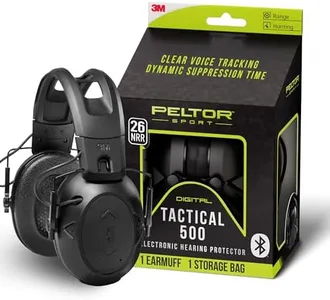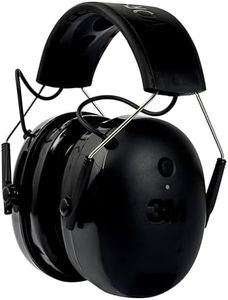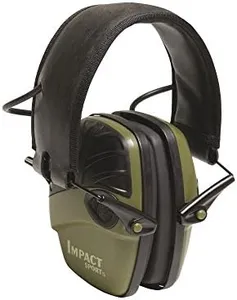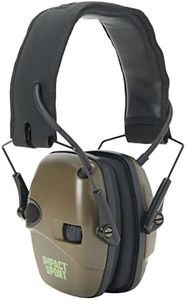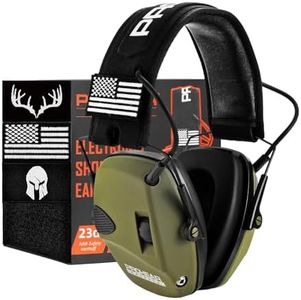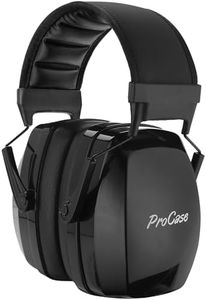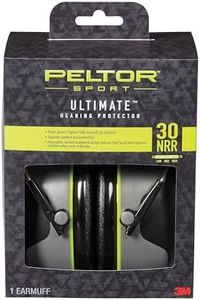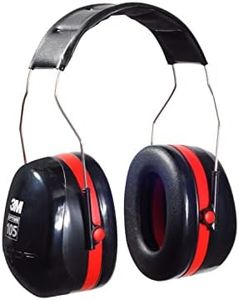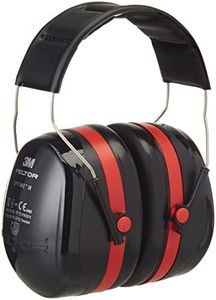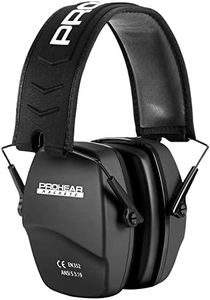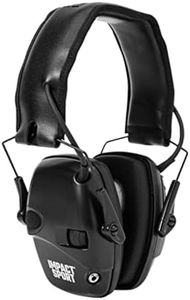We Use CookiesWe use cookies to enhance the security, performance,
functionality and for analytical and promotional activities. By continuing to browse this site you
are agreeing to our privacy policy
10 Best Shooting Range Ear Muffs
From leading brands and best sellers available on the web.Buying Guide for the Best Shooting Range Ear Muffs
Choosing the right ear muffs for the shooting range is important for both safety and comfort. The main goal is to protect your hearing from loud gunshot noises, which can cause permanent damage over time. The right pair should be effective in reducing noise, comfortable to wear for extended periods, and suitable for your specific needs or preferences. Understanding the main features will help you make an informed choice tailored to your shooting habits.Noise Reduction Rating (NRR)Noise Reduction Rating, or NRR, tells you how much noise the ear muffs can block out and is measured in decibels (dB). The higher the NRR, the more protection you get from loud sounds. NRR values typically range from 20 dB to 31 dB for shooting ear muffs. For casual or occasional shooters, an NRR of 22-25 dB might be enough, but if you're at an indoor range or using louder firearms, consider ear muffs with an NRR of 28 dB or higher. Match the NRR to your shooting environment and firearm type for proper protection.
Type (Passive vs. Electronic)There are two main types of shooting ear muffs: passive and electronic. Passive ear muffs use materials to block noise and are always 'on,' reducing all sound levels equally. Electronic ear muffs, on the other hand, use microphones and speakers to allow you to hear conversations and range commands while automatically blocking harmful gunshot noises. Passive ear muffs are simple and reliable, ideal if you just need basic protection. Electronic ear muffs are best for those who value situational awareness and easier communication. Pick based on how important conversation and awareness are for your shooting sessions.
Comfort and FitComfort and fit affect how long you can keep the ear muffs on without discomfort. Look for features like adjustable headbands, cushioned ear cups, and a lightweight design. Some are designed for larger or smaller head sizes, and cup shapes may vary for different head shapes. If you shoot for long periods, prioritize softer padding and adjustable features to prevent headaches or pressure. Try to find a pair that sits snugly without being too tight, and consider whether you wear glasses or hats, as this can impact the seal and comfort.
Durability and Build QualitySince shooting range gear is often handled roughly or exposed to the elements, durable construction matters. Quality ear muffs use sturdy plastics or metals for the headband, and long-lasting materials for the ear cushions. Basic models might suffice for periodic use, but frequent shooters or those using outdoor ranges should look for well-built muffs that can withstand regular use and possibly resist sweat or weather. The longer and more often you shoot, the more you should look for solid construction.
Portability and StoragePortability refers to how easy it is to carry or store your ear muffs. Some models fold up into a compact form, making them easy to pack in a range bag or pocket. If you travel to different ranges or carry a lot of gear, foldable or lightweight ear muffs are easier to manage. If you usually shoot in the same place and store your equipment at home, this feature might be less important. Think about how you'll transport your ear muffs to decide how compact they need to be.
